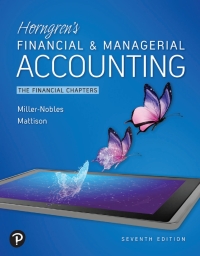Question
Below I have attached the question and its answer, please help me by listing the formulae used in each step of the calculation, thanks. You
Below I have attached the question and its answer, please help me by listing the formulae used in each step of the calculation, thanks. You do not need to answer the thesis question, the answer is already given.
Newtownabbot Council is considering refurbishing and re-launching a theatre which it has wholly owned and operated for thirty years. The required work has been costed for a 10 year development plan which is based upon a shift towards providing a much higher quality of service than in the past. The refurbished theatre would provide facilities that would be much more attractive to touring companies and artists and, it is hoped, to the theatre-going public.
The impact of the development is uncertain as the theatre has experienced decline in recent years and it is feared that local people have got out of the theatre-going habit. Three scenarios have been presented in the development plan, each based upon a view taken on likely demand after completion of the refurbishment work.
The cost of refurbishment would be 1.5m. The three scenarios are based upon high, medium and low expectations of increased demand. The net annual contribution of each is shown in the table below along with an assessment of probability which has been undertaken by a senior management group within the council.
Demand level Increase in contribution Probability %
High 250,000 25
Medium 200,000 40
Low 150,000 35
The council is risk averse and has decided to use expected value in its investment appraisal. It is normal practice for the council to calculate both net present value (NPV) and the internal rate of return (IRR) of proposed investments and to use a discount rate of 6% for schemes which have commercial element, such as this one.
Required
(a) What does it mean when the council is described as risk averse and how will expected values help in this context?
(15 Marks)
(b) Calculate the expected value of the annual contribution due to the refurbishment work.
(5 Marks)
(c) Using the expected value figure from above calculate the net present value and the internal rate of return of the proposed refurbishment scheme.
(40 Marks)
(d) Perform a sensitivity analysis to show how sensitive the project is to changes in the following variables:
Initial cost
Discount rate
(25 Marks)
(e) Discuss the advantages and disadvantages of sensitivity analysis.
(15 Marks)
ANSWER:
(b) The expected value calculation is based upon the weighted probabilities of the outcomes.
Demand level Profit Probability % Expected value (EV)
High 250,000 30 75,000
Medium 200,000 40 80,000
Low 150,000 30 45,000
Overall EV 200,000
(c) Initial outlay is 1.2m which will be incurred at the outset of the project (time 0).
The cash inflow is 200,000 per annum for ten years.The present value of an annuity over 10 years at 6% is 7.36. This gives a present value of 200,000 over 10 years of 200,000 x 7.36 = 1,472,000
Overall the net present value (NPV) is -1,200,000 + 1,472,000 = 272,000
The internal rate of return (IRR) can be calculated by interpolation.
For example, the NPV at 12% is
-1,200,000 + (200,000 x 5.65) = (70,000)
IRR = 6 + (272,000/ 342,000) x (12 6)
= 6 + 4.8 = 10.8%
(d)(i) Initial cost sensitivity = (272/1200) x 100 = 22.7%
(ii) Discount rate sensitivity = (4.8/6) x 100 = 80%
Step by Step Solution
There are 3 Steps involved in it
Step: 1

Get Instant Access to Expert-Tailored Solutions
See step-by-step solutions with expert insights and AI powered tools for academic success
Step: 2

Step: 3

Ace Your Homework with AI
Get the answers you need in no time with our AI-driven, step-by-step assistance
Get Started


